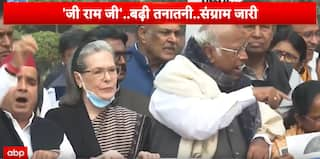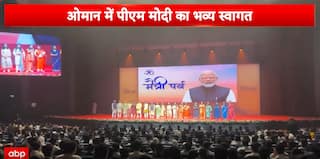Foldable Phones: Whatever Happened To The ‘Next Big Thing’ In Tech?
A mainstream foldable phone that can be purchased and used by the general consumer seems nowhere in sight.

It was supposed to be the next big thing in tech. The trend that would transform phones as we know them, maybe even more than the iPhone did. It would perhaps spell the end of tablets in the short run and maybe even notebooks in the long run. We are talking of The Great Foldable Phone Revolution which we were told was "just around the corner" in 2019. Three years down the line, it seems stuck on the same corner. We have seen a number of foldable devices being released, but a mainstream foldable phone that can be purchased and used by the general consumer seems nowhere in sight.
In fact, the past few days pretty much summed up the state of foldable phones today. While one set of leaks gave information about the next Motorola Razr foldable, another set indicated that Google had put plans about a Pixel foldable phone on the backburner. This is where we stand in the foldable phone world — brands have not yet given up on the concept as yet, but many (Samsung being a notable exception) are no longer quite as bullish as they once were about foldable phones.
Why foldables remain… folded
There are many reasons attributed to this relative drop in enthusiasm on the foldable phone front. The biggest, of course, is the COVID-19 pandemic which struck in early 2020, and the effects of which are still being felt. There is a broad consensus that the pandemic resulted in not only supply and design issues (with companies in lockdown, working on a new design was difficult) and increased component costs, but also made the market sentiment generally negative. With revenues and profits slipping, brands have fewer funds to invest in innovation. Most observers expect things to change once supply chains and the economy get back on the growth rails.
However, that is only part of the problem. A more important issue, according to some of our sources, is the fact that apart from having to flaunt value, most foldables have actually failed to deliver on the utility front. In a perfect world, a foldable device would be a smartphone when folded and would morph into a tablet when unfolded or opened, thus giving you the benefit of two devices in a single, portable one. While that has been happening in theory, things have not actually worked out as well in practice. Foldable phones, with the exception of the latest ones from Samsung, have often turned out to be buggy, fragile, and with relatively mediocre cameras and battery life.
The foldable challenge: Engineering, software
There are reasons for this. Manufacturers have to keep phones as slim as possible to ensure they are easy to carry. In the case of foldable phones, this becomes particularly difficult as most foldable phones fold down the middle and therefore, have two halves when folded. Manufacturers, therefore, have to keep each half as slim as possible, which reduces the space for battery and camera sensors. It also makes the devices a little fragile and more difficult to protect against dust and water — there simply is way more area to protect and reinforce.
The foldable form factor also brings into play the concept of a 'fold' or a 'crease' between the display which can often be an eyesore when viewing the device in folded-out mode. The fact that there are often two displays in the device (a smaller one when folded, and a larger one when unfolded) also hits battery life. The fact that Android apps tend to struggle on tablet-sized displays does not help matters. Apps have to be designed slightly differently for foldables as many have to switch from one resolution to another the moment the device is opened or folded. As there are relatively few foldable devices around, many developers do not put in the effort for this. The result? The software experience on foldables is often anything but premium.
The foldable challenge: Premium pricing
At the time of writing, foldable phones come with premium price tags (generally in excess of Rs 75,000). So in essence, people end up paying a premium price for an experience that is not always premium, whether it is in design or performance. Yes, foldables still have an "exotic" and "different" feel to them, and using one in public still turns heads. But sales indicate that most people still turn to more conventional devices when it comes to sheer ease of use and convenience. Samsung's Galaxy Fold and Flip series have done very well, but the Galaxy S series still does way better, as per our sources.
This could well explain why a number of brands that seemed to be initially very enthusiastic about foldables have become less so — they might bring in eyeballs and footfalls, but currently are not likely to get the cash registers ringing. And unless foldable sales rise exponentially, components for foldables (special displays, batteries, et al) will remain expensive. Foldable prices will not come down if sales do not go up, and sales will not go up unless prices come down. It is a bit of a vicious circle. It is a cycle that devices like the iPhone have been able to beat but that was because they not only had a flaunt value but also delivered in terms of functionality. Foldables have to get past that challenge.
Foldables have NOT folded up… but their future is not right now
All this, of course, does not mean that foldables have folded up (pun intended). Our experiences with Samsung's Galaxy Fold and Flip series have shown us that when well-implemented foldables can actually be super useful for entertainment as well as productivity. As we have kept pointing out, however, Samsung is an exception in the foldables region. The South Korean brand is the only one that seems dedicated to foldable phones and the results are visible in the Flip and Fold, which are the only foldables we would recommend without reservations to most users.
Samsung's efforts apart, the foldable revolution seems to have just run out of a little steam at the moment. This is a massive pity, as it deprives users of what could actually be a very interesting and genuinely useful form factor. Research analysts insist that the future for foldables is bright, and Counterpoint predicted that foldable shipments could grow tenfold (pun intended again) by 2023. Industry insiders, however, point out that growth figures of foldables would be impressive mostly because they were calculated on a relatively low base figure.
Interestingly, Counterpoint also predicted that Samsung would be the dominant player in this segment, with a 75 percent share by 2023. That is good news for the brand but it also seems to indicate that other brands might not be as participative in the segment. And that in turn might mean that foldables are likely to continue to remain slightly niche figures rather than a part of our everyday lives. For a while anyway.
The foldable phone future has not been canceled. It has just been postponed. For how long is anyone's guess. Perhaps until the day Samsung will release a Fold (M series, perhaps) that is priced at Rs 39,999? It is worth remembering that even the highest selling foldable phone of all time, the original Moto Razr, only became a bestseller when its price dipped.






































